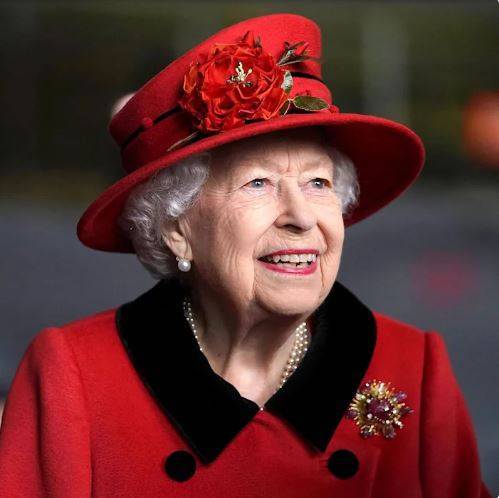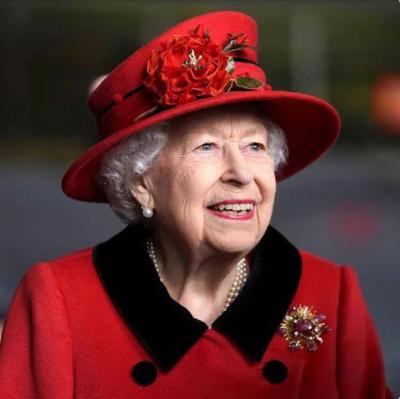Most Britons have never known a monarch other than Elizabeth. While the flames of global change have been raging, the woman historians refer to as the "Accidental Queen" has remained steady. At 95 years old, her years align with the history of the kingdom to the point that some jokingly wonder what will happen in the event of her death, considering such an event could plunge Britain into a panic akin to what occurs in honeybee colonies upon the death of their queen.
However, speculation did not last long, as the American political newspaper "Politico" leaked the British government's secret plan in September of last year regarding the death of Queen Elizabeth II, a scenario reinforced by her contraction of the coronavirus. Amid the ongoing death rumors surrounding the queen, the British plan has resurfaced, outlined in a document that sketches a blueprint for navigating the shock of the news if it occurs and returning to the orderly "ant colonies" that exist within monarchies.
"LONDON BRIDGE" is the code name given to the plan set to unfold in the days and weeks following Queen Elizabeth's passing. She has been on the throne since 1952, marking the longest reign of any monarch in British history. Throughout her reign, the queen has witnessed over ten British prime ministers, nearly 20 Summer Olympic Games, and more than six popes. The queen is a cornerstone of the Commonwealth nations, presiding over nearly 600 organizations and charities, playing a pivotal role in the UK’s alliance with various countries. Therefore, her death would usher in significant changes, not only within the United Kingdom but likely around the world as well.
The "London Bridge" plan will commence with her private secretary, Lord Edward Young, immediately conveying a message to the Prime Minister, likely containing the words: "London Bridge has fallen." The Prime Minister would then initiate the plan. Within minutes, 15 governments outside the UK will be informed via a secure line, followed by 36 other Commonwealth nations' leaders globally. Subsequently, Buckingham Palace's gates will display a black sign bearing the news, while simultaneously, the information will spread to media outlets worldwide. All media sources will prepare to receive the news, and every broadcasting station will have a network of lights signaling a national disaster. The British Broadcasting Corporation (BBC) will halt all programming, providing only news coverage, with presenters dressed in black suits and attire. The traditional red branding of BBC News will turn black.
Newspapers, television channels, and radio stations will have days of ready coverage starting from the day of her death.
Upon her passing, the queen's eldest son, Charles, will immediately become king. Reports suggest that the stock market and shops across the UK will likely close for the day out of respect. The day after the queen's death, Charles will deliver his first official television address as king, and the government will pledge loyalty to him, accompanied by a 41-gun salute in Hyde Park in London. Following this, King Charles, if he chooses to use that name, will embark on a tour of the UK, visiting government leaders in the capitals of Edinburgh, Belfast, and Cardiff before returning to London. During this period, television channels will air numerous documentaries already produced in honor of the queen, while the BBC will refrain from airing comedy shows as a sign of respect until after the funeral.
Four days after her death, the queen's coffin will be transported in a military procession from Buckingham Palace to Westminster Hall, where it will lie for the following four days. Afterward, King Charles's family and dignitaries will hold a service in her memory. The doors will then open for hundreds of thousands of people who will queue outside, with estimates suggesting the funeral will occur 10 to 12 days after the queen's death. It is certain that the funeral day will be a public holiday for banks across the UK, the stock market will close for the second time in less than two weeks, and many businesses will follow suit.
At 11:00 a.m., Big Ben’s chimes will toll, the country will fall silent, and the coffin will be brought to Westminster Abbey, where 2,000 invited guests will bow their heads in prayer. After the service, the coffin will be transported to Windsor Castle and finally to St. George's Chapel, where it is likely Queen Elizabeth II will be buried next to her father, King George. Within a year following the funeral, an official coronation ceremony for King Charles will likely take place, prompting banks to close again.
Overall, due to multiple public holidays, funeral expenses, and coronation celebrations, estimates suggest that the queen's death will cost the British economy billions of pounds. Additionally, hundreds of changes will occur across the UK in the months following, with new British currency printed bearing the king’s image, gradually phasing out the queen's currency, along with stamps, passports, police and military uniforms, while the national anthem will also change. Moreover, the world's and Commonwealth's reaction to the new king could forever alter the British monarchy. For instance, there is increasing support in Australia to transition to a republic, and the queen's death could amplify this support, prompting efforts from other countries to follow suit, which is likely expected to weaken the British monarchy significantly. Thus, the "London Bridge" plan will be activated, potentially marking the largest funeral in modern times, closely followed worldwide, and signaling the end of an entire era.




